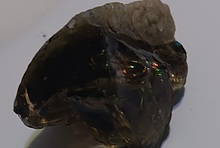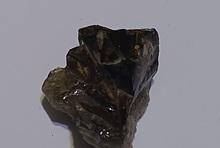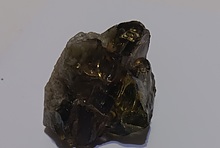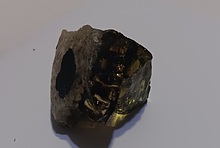Home PageAbout MindatThe Mindat ManualHistory of MindatCopyright StatusWho We AreContact UsAdvertise on Mindat
Donate to MindatCorporate SponsorshipSponsor a PageSponsored PagesMindat AdvertisersAdvertise on Mindat
Learning CenterWhat is a mineral?The most common minerals on earthInformation for EducatorsMindat ArticlesThe ElementsThe Rock H. Currier Digital LibraryGeologic Time
Minerals by PropertiesMinerals by ChemistryAdvanced Locality SearchRandom MineralRandom LocalitySearch by minIDLocalities Near MeSearch ArticlesSearch GlossaryMore Search Options
The Mindat ManualAdd a New PhotoRate PhotosLocality Edit ReportCoordinate Completion ReportAdd Glossary Item
Mining CompaniesStatisticsUsersMineral MuseumsClubs & OrganizationsMineral Shows & EventsThe Mindat DirectoryDevice SettingsThe Mineral Quiz
Photo SearchPhoto GalleriesSearch by ColorNew Photos TodayNew Photos YesterdayMembers' Photo GalleriesPast Photo of the Day GalleryPhotography
╳Discussions
💬 Home🔎 Search📅 LatestGroups
EducationOpen discussion area.Fakes & FraudsOpen discussion area.Field CollectingOpen discussion area.FossilsOpen discussion area.Gems and GemologyOpen discussion area.GeneralOpen discussion area.How to ContributeOpen discussion area.Identity HelpOpen discussion area.Improving Mindat.orgOpen discussion area.LocalitiesOpen discussion area.Lost and Stolen SpecimensOpen discussion area.MarketplaceOpen discussion area.MeteoritesOpen discussion area.Mindat ProductsOpen discussion area.Mineral ExchangesOpen discussion area.Mineral PhotographyOpen discussion area.Mineral ShowsOpen discussion area.Mineralogical ClassificationOpen discussion area.Mineralogy CourseOpen discussion area.MineralsOpen discussion area.Minerals and MuseumsOpen discussion area.PhotosOpen discussion area.Techniques for CollectorsOpen discussion area.The Rock H. Currier Digital LibraryOpen discussion area.UV MineralsOpen discussion area.Recent Images in Discussions
GeneralOldest mines

10th Jun 2016 15:21 UTCHans Kloster
Jerome O. Nriagu, Science 11. sept. 1998 write about lead: It was the first metal to be extracted from its ore, and with this discovery, humankind awakened to metal technology...A breakthrough for extracting silver from lead ores, called cupellation, appeared around 3500 B.C and greatly enhanced the popularity of silver...The Greek mines at Laurium operation well before 3000 B.C.
The Bronze age is more difficult to handle. I have seen a note, that Bronze was invented in India 5.000 BC. The oldest copper-mine in Cyprus in from about 4000 BC and Crete imported copper and bronze from Cyprus in 2500 BC.
Geological Survey of Israel, Sept. 1996: During the Early Bronze age (3200-2400 B.C.E.) bronze artifacts in the Levant were composed largely of copper and arsenic...The ore sources of the tin are still unknown although one suggested tin mine is in Kestel, southern Turkey (Yener et al, 1989, Yener and Vandiver, 1993). I think the arsenic came from auripigment and and tin from cassiterite. The mineral Muschistonite contain copper and tin, but it is very rare.Litvinskij, USSR wrote in 1950, that tin was operated in Karnab, Uzbekistan and Muschiston in Tadsjikistan and sold to Mesopotamia and other. Wikipedia write about tin from Cornwall and Devon, that tin was sold to European countries about 1600 B.C. and the Glockenbecker-leute (Beaker) was the first in about 2500 BC to processing metal and about 2150 B.C. produced they bronze. The bronze heavenslice from Mittelberg near Nebra in Deutschland is from about 1600 BC.
Dietrich Ankner: Naturwissenschaftliche Untersuchungen an den Metallen der Vorgeschichte. Ausgrabungen in Deutschland. Teil 3, Monographien Band 1,3. Bonn. 2002. Writes about bronze, gold, silver, lead, tin and antimon. Ankner writes, that gold was knowm from late Bronze age in several countries.
10th Jun 2016 16:19 UTCMichael C. Michayluk
Evidence of Ancient Copper Mining in Lake Superior

10th Jun 2016 16:44 UTCHendrik van Oss
While the now closed Ngwenya Mine was worked for iron ore (very small total tonnage cf. most iron ore mines), the Lion Cave itself was worked (43,000 years ago) for ochre for body paint, not for iron ore, per se.
Hendrik van Oss
10th Jun 2016 17:40 UTCNathalie Brandes 🌟 Manager
In the Neolithic, mining was still done with stone, bone and antler tools. A nice example of a Neolithic mine is Spiennes, Belgium. This is a chert/flint mine that operated from 4400 BC to 2000 BC. It covers ~100 ha and has shafts 8-16 m with drifts 2-5 m.
During the Chalcolithic (Copper Age), mining technology advanced. Metals began to be extracted and miners could work in harder rocks due to the development of firesetting. People also began to smelt ore during this time.
The Bronze Age saw mining and metallurgy expand even more.
In the ancient world, the Romans had very advanced mining industry. They used opencast, underground, and hydraulic mining methods. Underground mines were accessed through shafts and adits. Ore was broken using firesetting, iron gad bar, iron picks, and iron battering rams. In underground mines, Romans were known to use the room and pillar method and timbering in areas. To raise ore to the surface, baskets or buckets were used. Because many Roman mines were underground, they developed methods of lighting, ventilation, and dewatering. Oil lamps were used for illumination. Diodorus even wrote that some lamps were worn on the head. Romans also used oil lamps for checking air quality. To get decent air circulation in mines, they sometimes would dig ventilation shafts. Dewatering was accomplished using French drains, bailing buckets, screw pumps, and waterwheels.
As far as the Copper Culture in North America, which Mr. Michayluk referred to, that is not my expertise in archaeology, but I can tell you what little I do know. The Copper Culture was active from~5000 BC to protohistoric (just before Europeans show up). Until ~1500 BC, copper was used for tools, but after ~1500 BC copper mostly used for ornamental objects. Copper Culture people first exploited float copper, the large masses that were carried by glaciers and deposited on the land. Later they quarried using hammerstones and firesetting. There is no evidence of smelting or casting. Copper was shaped with hot and cold hammering. Annealing must have been known, meaning copper was heated to at least 405°C. (Otherwise stress fractures would have developed in the copper.) Some researchers suggest that some artefacts were shaped using swaging.
I presented a paper at the 2014 New Mexico Mineral Symposium on Mining in the Ancient World. You can find the abstract at this link: http://geoinfo.nmt.edu/museum/minsymp/abstracts/view.cfml?aid=470
I also recently wrote an article on Rio Tinto, which is a very historic mine. That can be found here: https://www.mindat.org/article.php/2909/Rio+Tinto+and+the+Iberian+Pyrite+Belt
I hope this provides a bit more information about the long and fascinating history of mining. And I hope everyone has a fantastic day!
Nat

10th Jun 2016 18:03 UTCRolf Luetcke Expert
In Arizona they found some of the turquoise discoveries had ancient diggings where one could still see the primitive methods used to chip out the blue turquoise.
In cliff dwellings I have found pieces of hematite that had been used by the native peoples for coloring agents. I found tiny pieces where they had been rubbed on stone surfaces to produce powder for the coloring they used on their pottery, cave painting and more.
I think primitive mining goes back to the earliest peoples to walk upright where they gathered stones for use in places they were abundant.
In Arizona there is evidence of the use of products they had to dig out in numerous places.
Don't know if that fits into the earliest mining thread but it is one small piece in the story.
10th Jun 2016 18:31 UTCUwe Kolitsch Manager
Aibunar, Stara Zagora, Stara Zagora Oblast, Bulgaria
Stone age copper mine (~4000 year B.C.).
One of the earliest evidence of European copper mining and metallurgy.
Source of most of the copper objects (axes etc.) originating from that time and found in eastern Europe.
Rudna Glava Mine, Bor-Majdanpek District, Serbia
Stone age copper mine (5000 year B.C.).
Early (and perhaps the earliest) evidence of European copper mining and metallurgy.
Studied between between 1968 and 1989, and excavated as part of the "Old Mining and Metallurgy of the Central Balkan" project.
Most of the copper objects (artefacts) from this time come, however, from Aibunar in Bulgaria.
Majdanpek Mine, Bor-Majdanpek District, Serbia
Porphyry and replacement type (skarns, mantos) Cu-Au deposit.
Prehistoric mining, already approx. 5000 years before present (E. Pernicka, talk at NHM Vienna in September 2011).
10th Jun 2016 19:33 UTCPavel Kartashov Manager
10th Jun 2016 19:53 UTCRob Woodside 🌟 Manager
10th Jun 2016 21:56 UTCNathalie Brandes 🌟 Manager
A recently published paper in Nature (Harmand et al., 2015) dates the earliest stone tool manufacture at 3.3 Ma. This date suggests that the earliest tools were likely shaped by an Australopithecine.
Nat
10th Jun 2016 22:23 UTCRob Woodside 🌟 Manager
11th Jun 2016 05:40 UTCPaul Stephen Cyr
11th Jun 2016 08:27 UTCBruce Cairncross Expert

11th Jun 2016 11:00 UTCjeff yadunno
https://www.youtube.com/watch?v=ekWRhMS-494
check out this guy's youtube channel
neat thread!

27th Nov 2016 13:06 UTCjeff yadunno
https://www.youtube.com/user/PAIexperience/videos?view=0&shelf_id=0&sort=dd
27th Nov 2016 13:16 UTCReiner Mielke Expert

27th Nov 2016 13:29 UTCBob Harman
27th Nov 2016 13:40 UTCReiner Mielke Expert

27th Nov 2016 14:00 UTCBob Harman
27th Nov 2016 14:10 UTCDavid Von Bargen Manager
27th Nov 2016 14:14 UTCReiner Mielke Expert
27th Nov 2016 14:17 UTCReiner Mielke Expert
27th Nov 2016 14:23 UTCReiner Mielke Expert

27th Nov 2016 14:25 UTCAlfredo Petrov Manager

27th Nov 2016 14:31 UTCWayne Corwin
They kept their best "specimens" with them at all times, it wasn't safe leaving them home.
:-D

27th Nov 2016 15:02 UTCBob Harman
A current day collector with limited financial means goes to a local show and finds a small pencil tourmaline or aquamarine etc (the specific stone does not matter). The specimen might be whole or broken, but not cut or facetted. The specimen might have been cleaned or oiled but that is all. The collector buys the example as a "mineral specimen". I think we would all agree that this example does qualify as a "mineral specimen".
At an ancient archeology site a similar stone is part of a jewelry ornament. It might be intact or broken, but neither cut nor facetted. It probably was cleaned or oiled to bring out luster, but that was it. It was used as found 5000+ years ago. So is it not still a "mineral specimen" that found its use as jewelry 5000 years ago?
If that stone used as jewelry had been removed from its ancient setting and found its way to the dealers table at the rock show, it would have been sold as a "mineral specimen" with no argument. So whether the stone was recently found and sold at a show or used 5000 years ago in jewelry in its original state should not matter. It should qualify as a ancient mineral specimen originally used in jewelry.
However more thought on this subject lends me to think that certain copper tools from about 20,000 to maybe 30,000 years ago were used as found. Would we consider copper tools using pieces of copper exactly as found with no alteration as old mineral specimens? We could take that example and put it onto a dealers table and sell it as a chunk of native copper; a mineral specimen! Whether for collection or use should not matter; a 30,000 y.o. copper tool (used in its original found state) vs a similar copper chunk in a mineral collection, both should qualify as specimens with one finding its original use as a tool. CHEERS.....BOB
27th Nov 2016 15:11 UTCReiner Mielke Expert
27th Nov 2016 15:26 UTCRob Woodside 🌟 Manager
27th Nov 2016 15:37 UTCRob Woodside 🌟 Manager
27th Nov 2016 16:10 UTCChristian Auer 🌟 Expert
See this (in German) https://de.wikipedia.org/wiki/Handstein
27th Nov 2016 16:21 UTCReiner Mielke Expert
27th Nov 2016 16:47 UTCRob Woodside 🌟 Manager
"A handstone (of hand-stone), not to be confused with handpiece, is a term from mineralogy and was originally a particularly beautifully crystallized mineral or ore stage, which the miner could bring to the daylight because of its handy size as a viewing object, as for example Piece from "Rotgültiger" (Proustit or Pyrargyrit).
As a result, the term "handstone" is used for artistically worked ore grades, which are attached to silver-plated or gilded pedestals. Mountain scenes are also depicted with the involvement of religious symbols.
The hand-stones, which were created in the 16th century in the late Renaissance and especially in Mannerism, combine nature and art, creating bizarre and precious minerals and crystals. These were collected by wealthy citizens or princes and exhibited in their art and miracle chambers. The production site is St. Joachimsthal in the Czech Republic with Caspar Ulich, who manufactured handstones there in the third quarter of the 16th century.
Precious handstone, decorated with z.T. Gilded silver, made around 1740 in Banská Bystrica (Slovakia); Exhibited at the German Mining Museum Bochum
In the eighteenth century handstone production experienced a revival, which was characterized by the use of many different materials. The handstones were used, among other things, as a table top, and continue to represent mining and mining technology at the time. There are known hand-made gents in Slovakia from around 1730.
On the basis of analyzes of the minerals used, handstones from the 18th century were able to be attributed to their origins, especially those around Kremnitz and Neusohl in today's Slovakia. The filling or adhesive material between the minerals was also examined and gave tree resin."
These were more decorative and impressive displays of wealth than intellectual pursuits. There's a huge decorated block of Argentite in the Hermitage at St Petersberg that If I remember dates from the 14th Century and from Joachimstal.
27th Nov 2016 16:54 UTCReiner Mielke Expert
27th Nov 2016 17:03 UTCRob Woodside 🌟 Manager
27th Nov 2016 18:31 UTCGregg Little 🌟
Most of the enthusiasts visiting this site I would assume fall into the category of laymen scientists with a strong appreciation of the aesthetics. I myself am a trained geologist with a career in supervising drilling operations in the mining and oil industries. The bulk of my time is spent microscopically and analytically observing the drill cuttings and core in the pursuit of natural resources. I have also collected rocks, minerals and fossils since my youth firstly for curiosity and beauty but later as a applied science career, although the fascination for the beauty has never left me. Even the mundane has beauty when it shows a geological process.
The appreciation of nature's beauty is still ingrained in us even though man's use of nature resources has become grandiose, complex and fanciful as seen in the Mayan ruins, Large Hadron Collider and skyscraper buildings. Although the march is ever so towards scientific inquiry we still carry with us that early eye for the beauty of minerals. I would venture that we subconsciously demonstrate that appreciation through our works, one of which is seen in the picture of this Calgary, Alberta skyscraper complex.

27th Nov 2016 22:57 UTCGuy Davis (2)

28th Nov 2016 00:37 UTCD. Peck

28th Nov 2016 02:12 UTCBen Grguric Expert
Grimes Graves flint mines in Norfolk, England were mined from 3000BC and included shafts and drives.
28th Nov 2016 11:49 UTCReiner Mielke Expert
29th Nov 2016 13:38 UTCRalph S Bottrill 🌟 Manager

31st Aug 2019 09:25 UTCAlfredo Petrov Manager
5th Sep 2019 05:40 UTCMark Heintzelman 🌟 Expert
5th Sep 2019 07:46 UTCMark Heintzelman 🌟 Expert




Mindat.org is an outreach project of the Hudson Institute of Mineralogy, a 501(c)(3) not-for-profit organization.
Copyright © mindat.org and the Hudson Institute of Mineralogy 1993-2024, except where stated. Most political location boundaries are © OpenStreetMap contributors. Mindat.org relies on the contributions of thousands of members and supporters. Founded in 2000 by Jolyon Ralph.
Privacy Policy - Terms & Conditions - Contact Us / DMCA issues - Report a bug/vulnerability Current server date and time: April 19, 2024 09:19:09
Copyright © mindat.org and the Hudson Institute of Mineralogy 1993-2024, except where stated. Most political location boundaries are © OpenStreetMap contributors. Mindat.org relies on the contributions of thousands of members and supporters. Founded in 2000 by Jolyon Ralph.
Privacy Policy - Terms & Conditions - Contact Us / DMCA issues - Report a bug/vulnerability Current server date and time: April 19, 2024 09:19:09














